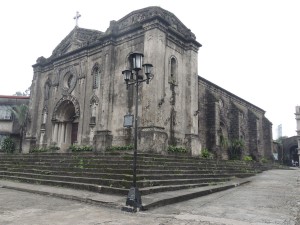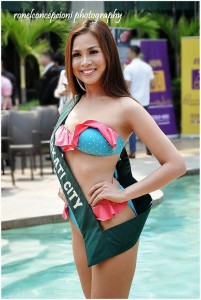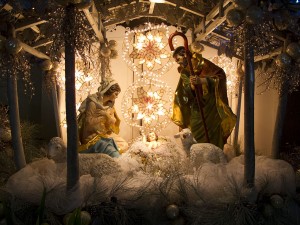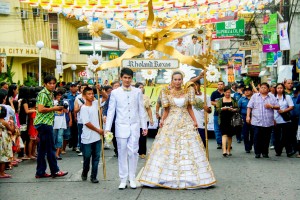Makati is the financial center of the Philippines where the Philippine Stock Exchange and the Makati Business Club is situated.
Notable for its multicultural lifestyle, Makati became known not only in the country but also abroad. The city is a home for many Makati hotels, shopping centers, condominiums, financial and entertainment hubs – most of them being owned, managed and frequently visited by the successful foreign businessmen – which is the major factor that made this city very prosperous.
History
 All starts from low but Makati didn’t just begin from low, it really started as a swampland! Some said that during the Spanish colonization, Juan Miguel de Legazpi dismissed the place as “worthless”.
All starts from low but Makati didn’t just begin from low, it really started as a swampland! Some said that during the Spanish colonization, Juan Miguel de Legazpi dismissed the place as “worthless”.
The place, a farming community, was part of a wide municipality of Santa Ana de Sapa (part of Manila today). Then year 1600, the place developed as a center for pilgrimage for the faithful devotees of the churches of Our Lady of Guadalupe (now Our Lady of Grace) and Saints Peter and Paul. The place became an independent municipality by year 1670 and was named as San Pedro de Macati in honor of Saint Peter its patron.
As years passed, many investors came to the municipality, putting businesses there that took the attentions of foreign neighbors. February 28, 1914, the Philippine Legislature passed Act 2390 thus shortening its name from San Pedro de Macati to simply Makati.
“From grass to class”, as what they call it, Makati City proved it throughout the years by being a great contributor to the development of the Philippine economy.
Population/ Language/ Area
Makati  City has a population of almost 530,000 and increasing. In fact it was the 16th largest city in the country and was ranked as the 41st most densely populated city in the world. However in daytime, especially during the typical work days, the city reaches million of population due to large number of people working in the city. With a total land area of 27.36 square kilometers or 2,735 hectares it owns the whole 4.3% of National Capital Region’s total land area.
City has a population of almost 530,000 and increasing. In fact it was the 16th largest city in the country and was ranked as the 41st most densely populated city in the world. However in daytime, especially during the typical work days, the city reaches million of population due to large number of people working in the city. With a total land area of 27.36 square kilometers or 2,735 hectares it owns the whole 4.3% of National Capital Region’s total land area.
The people speaks Tagalog as their first language yet there are still many who speaks English here. As part of their multicultural lifestyle, it is never hard for any foreigner to be a part of the conversation.
Products and Services
Being a highly-urbanized city, Makati offers their condo units, hotels, restaurants, entertainment houses and malls. The cost of living here is significantly higher than the neighboring cities due to its commercial and residential areas which are relatively high in value; but there are still accommodations and services in the city that are cheep enough for economically-minded tourists. Some of those are the Makati Cinema Square, The Landmark, Cash & Carry and the Guadalupe Mall.
Aside from residential places and shopping centers in the city, Makati also has universities, telecommunications centers, hospitals and embassies. Much of these are known for its quality service and approved technical affluence.
Business Opportunity
There is a wide possibility for business in Makati. Call centers, hotels, condo units, shopping centers and resto bars are some of the businesses that are being flocked by the customers. Since there is a growing number of people visiting the place almost everyday, putting up a business that could fit in the urban, is a good idea.
Tourist Spots
The place is a center not only for economy but also for tourists attraction. From art museums and parks to memorial center, the city is paved with awe-inspiring tourist spots. These are always visited by the foreigners and local travelers.
They also have festivals. To name a few:
- Belen sa Makati – This is a celebration when all major buildings are decorated by lights and locally made lanterns. The schools and barangay center also make their own version of crèche or nativity scene. This celebration usually starts at December.

- Caracol – This is celebrated every last Sunday of January annually and an official festival of Makati, that promotes and encourages the preservation of natural resources. major participants, who are dressed in flowers, animals, tress etc, are students from different public school of the city.
- Costumes, Trinkets and Xong Di – This is an exhibit represented by the People’s Republic of China which showcases similar costumes and trinkets of Philippine ethnic tribes.
- Flores de Mayo – This is considered to be the biggest procession in Metro Manila in which 120 young ladies represents 32 barangays of the municipality, establishments, local and government offices and corporations based in Makati City.

- Likhang Kamay – This is an event where the artworks of various artists and craftsmen are being displayed in an exhibit. In this event, many prospective buyers and investors are invited to promote the city’s growing economy.
